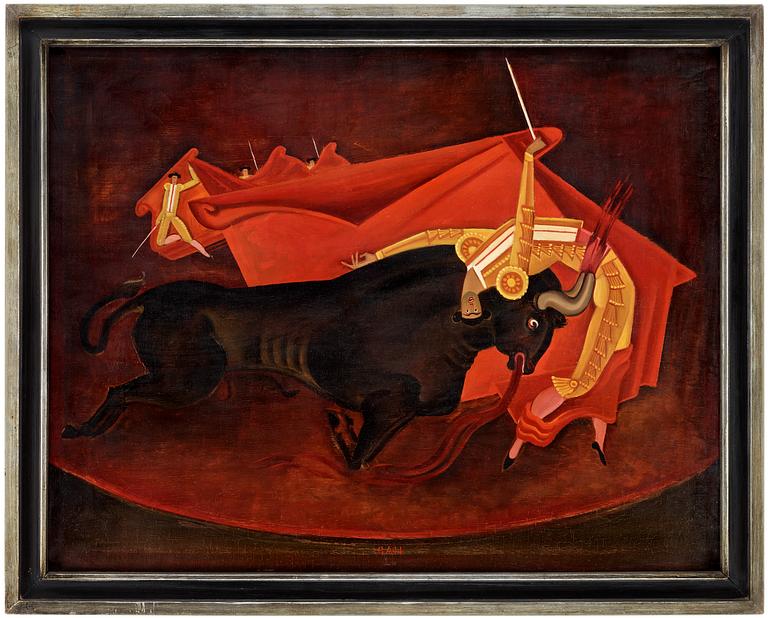Gösta Adrian-Nilsson
"Tjur och Matador III" (Bull and Matador III)
Signed GA-N and dated -26. Canvas 52 x 66.5 cm.
Provenance
Dr Elsa Appelberg-Ulfsparre, Stockholm.
Exhibitions
Liljevalchs konsthall, Stockholm, "GAN-retrospektivt", 1958, cat no 134.
Literature
"Konst i svenska hem", volume 6, reproduced page 312 under collection 504; Dr. Folke Ulfsparre and Dr. Elsa Appelberg-Ulfsparre, Kungsholmstorg 4, Stockholm (with title "Bull and matador").
Designer
Gösta Adrian-Nilsson is most notable as a visual artist, and he is a pioneer of Swedish modernism. He studied at the Tekniske Selskabs Skole in Copenhagen and later for Johan Rohde at Zahrtmann’s school in Copenhagen. As an avant-gardist, Nilsson was constantly searching for new influences. In Berlin, he was influenced by the circle around the radical magazine Der Sturm, through Kandinsky and och Franz Marc. In Paris through Fernand Legér and the artists in his circle. GAN was an eclectic in the positive sense of the word. He took the the artist styles of the 1900s and created new impressions. Symbolism, cubism, futurism, expressionism, constructivim and Theosophy were the colours occupying his internal pallet. He had a sharp eye for the masculine and his painting was often energized by the vitality of modern technology, vibrant eroticism, and echoes of tyrants. No other Swedish modern artist exhibits such a unique style.
Read more


























